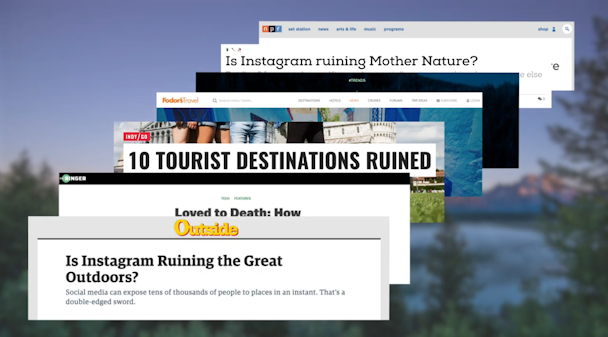Advertising overcrowded your dream holiday destination - it can also save it
Tourism marketing works too well, sending too many people to too few places. M&C Saatchi’s Alex Lemecha-Sim has the fix as part of The Drum’s Travel and Tourism focus.

/ Jackson Hole https://youtu.be/tu5QgDD-_AI
Tourism is booming like never before, with international tourist arrivals soaring by a jaw-dropping 192m annually over the past decade. But while the allure of exploring new places has grown (thanks to greater access, more generous leave policies, and an abundance of budget-friendly travel options), it’s not all sunshine and sandy beaches. The industry is facing serious questions on its environmental impact and the steady creep of tourists into every corner of local cultures.
And with destinations investing more than ever in brands and creativity, are we part of the problem? Let’s face it: marketing is a double-edged sword. It can make or break a destination.
Take Barcelona or Japan, two high-profile victims of their own brilliant branding success stories, where irresistible appeal is putting a strain on local infrastructure and pushing communities to the brink of protest. The rise of social influencers and UGC has only increased the pressure, turning TikTok hotspots into viral magnets for the masses. For governments and marketers alike, the ethics of pushing already jam-packed destinations are murky waters, as sustainability concerns collide with transformational economic gains in terms of revenue and job creation.
Placemaking initiatives are designed to create attractive, vibrant public spaces, which can make destinations more appealing to tourists and residents alike. However, these initiatives can work both ways: enhancing visitor experiences on one hand while attracting even more visitors on the other, exacerbating overtourism. It’s like sprucing up your garden and suddenly finding the whole neighborhood wants to come over.
Explore frequently asked questions
That said, when done right, placemaking can be a powerful tool for sustainable tourism. For instance, Japan’s ‘regional revitalization’ efforts aim to rejuvenate rural areas by tempting tourists away from overburdened cities like Tokyo and Kyoto towards provincial gastronomic hotspots. Similarly, the development and branding of the ‘Wild Atlantic Way’ in Ireland has successfully dispersed tourist activity along a scenic coastal route, benefiting smaller communities and hastening calls for the initiative to be extended into Northern Ireland. These examples show that, with thoughtful planning, placemaking can drive economic growth, create jobs, and foster a deeper appreciation for diverse cultures.
Innovation also offers some smart solutions for managing tourism. Data analytics, such as McKinsey’s recent study on Destination Readiness, can assess a destination’s carrying capacity and predict travel trends to help manage tourist flows. By crunching numbers on tourist behavior, destinations can dodge the bullet of overcrowding and protect sensitive areas. Enter virtual tourism. Love them or hate them, those divisive VR devices offer increasingly immersive experiences without the carbon footprint of physical travel.
Advertisement
Innovative campaigns promoting off-peak getaways and lesser-known destinations are also hitting the mark. Aarhus, Denmark, has embraced social media effectively to draw trend-hawks away from fashionable Copenhagen through personalized itineraries, showing how digital strategies can spread tourist activity more evenly.
But who better to shape sustainable tourism strategies than the locals themselves? Engaging communities in tourism planning and place-branding initiatives is crucial. When locals have a say, they can ensure tourism reflects their needs and values, sparking pride and collaboration.
Community-led tourism initiatives are a shining example. From learning salt-making from a local saunier in France, to basket-weaving programmes employing 100 female entrepreneurs in Uganda, residents are taking the reins, promoting activities that highlight their cultural heritage and natural assets. This ensures tourism benefits are shared fairly and helps preserve the unique character of these destinations.
Advertisement
Tourism is at a turning point, with many popular spots struggling to balance visitor numbers and sustainability. Marketing and placemaking have pivotal roles to play in this balancing act. By crafting campaigns that champion responsible tourism and spotlight lesser-known destinations, we can spread the economic benefits more broadly and ease the strain on overcrowded hotspots.
The future of tourism hinges on our ability to innovate and adapt. By leveraging technology, engaging communities, and embracing ethical marketing practices, we can create a tourism landscape that benefits everyone. Responsible tourism isn’t just a buzzword; it’s the key to sustaining our beloved travel destinations for generations to come.
Alex Lemecha-Sim is business director at M&C Saatchi. Here is his LinkedIn if you want to continue the conversation.
